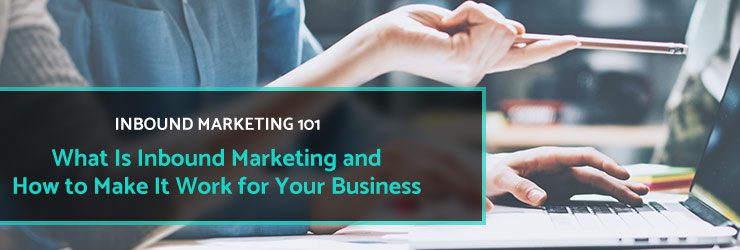Marketing has changed a lot with the popularity of the Internet. What used to be a highly sales-driven environment of cold calls and dialing for dollars has now transformed into meeting potential customers where they already are, providing them with the resources they need, and being helpful as they narrow down their options before even speaking with a salesperson or anyone from your business. This type of marketing is referred to as “inbound” because it’s more about bringing people in through good content and valuable resources than it is about going out and searching for opportunities.
What Is Inbound Marketing?
Inbound marketing is the methodology and strategy behind creating helpful resources and content for your ideal customer. It allows them to self-select and match your offerings to their needs so when they do approach your salesperson, they are well-informed and a good fit for your business.
Regardless of whether you are using targeted content for buyers or not, this is already occurring on the potential customer’s end. SiriusDecisions reports that,
“70% of the buying process in a complex sale is already complete before prospects are willing to engage with a live salesperson.”
Inbound marketing saves your salespeople time because with targeted content you are saying the right thing to the right listener and they’re presenting themselves when they are further down the sales funnel and more ready to buy. For the sales department, it shortens sales conversion time and helps them “sell” more efficiently when a customer is ready to listen.
What are Ways to Use Inbound Marketing?
Using inbound marketing is easy because it’s the way people are already shopping. Potential customers are out there doing their own research before you’re even aware of their presence. They are weighing their options and courses of action. That’s why helpful resources are essential on your end.
Customers are out there, and they need your help. But they’re not going to ask for it because they don’t want to be sold to. You need a lead nurturing strategy and solid materials aligned with the different customer stages to help them partially self-convert from prospect to sales.
Those stages are:
- Attract. These are strangers who are just learning about you. Keywords, blogs, and social postings will get them to notice you.
- Convert. These are visitors that you want to convert into leads. You’ll do this through landing pages, calls to action, and more in-depth product/industry info.
- Close. They know who you are, what you do, and how you can solve the problem. Now you need to get them to select you. You do this by marketing automation and nurturing campaigns.
- Delight. They became customers now you want them to sing your praises. You need to find ways to make them feel special and engage with you. Surveys, social listening, and content and items targeted to the customer can help.
The most important part of inbound marketing and targeted content is that it is audience-centric, not business-centric. This isn’t about what you want to say, but rather what your audience wants to know or needs help with.
What Are the Pieces of a Successful Inbound Marketing Strategy?
A successful inbound marketing strategy will include the following components tailored to your business and target audience:
- A mobile-friendly website with good keyword density, authority, and ranking will help them find you.
- A blog and other resources in multimedia formats that are easy to access and address the questions your target audience wants to know.
- Social media profiles on platforms where your target demographic spends time.
- Landing pages</strong that speak to the issues your audience is concerned with and matches them with content that will help.
- Email marketing/marketing automation to stay in contact and top of mind until they are ready to buy.
- Content that speaks to all levels of decision-making from someone who’s just realizing they have an issue and you might be a solution all the way to someone who has narrowed you down to a shortlist and wants to see demos of your product.
- An editorial calendar will help you stay focused and organized when producing content for every buyer stage.
- Analytics to ensure you’re producing what your potential customers want and are responding to.
- Social listening tools help round out your analytics because you’ll want to know what people are saying about your business and the problems they face in general. If you can help them, chances are they’ll buy from you.
For successful inbound marketing, it’s all about the potential customer. You need to provide helpful resources and content to them where they are, across multiple channels.
With inbound, you’ll also be providing helpful resources through marketing automation software so you can stay on their minds until they’re ready to buy. You need to monitor your content’s success and change anything that is not working. This is about the customer, not about what you want to say. Finally, you need all of these marketing efforts to be integrated, so they work together not as disjointed systems.


